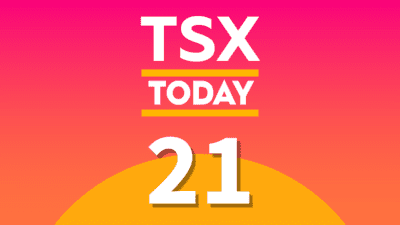So, you’ve opened a brokerage account, funded your TFSA / RRSP, and are ready to begin investing in the Canadian stock market. If you’re looking at a long page of tickers, you might start feeling confused. Which stocks are buys? Which ones are less risky? How do you know if this stock is a good long-term hold?
While you get caught up reading the picks other Foolish writers have selected, my suggestion is getting your feet wet and starting your Canadian stock investing journey via an exchange-traded fund, or ETF. These funds trade on exchanges and contain portfolios of various stocks.
A very common type of ETF is the index fund, which tracks a passive portfolio of stocks according to a set of rules. A great way to start investing in Canada’s stock market is via index ETFs that track either the S&P/TSX 60 Index or S&P/TSX Composite Index. Let’s take a look at some low-cost options today!
The S&P/TSX 60
The S&P/TSX 60 is a market cap-weighted index of the largest 60 TSX stocks. It is mostly comprised of blue-chip, dividend-paying stocks from the financial, energy, industrial, and utilities sectors. Notable top holdings include Royal Bank of Canada, Enbridge, and Canadian National Railway.
This index is commonly used in Canada as a measure of our overall stock market’s performance. It’s widely followed by both professional and retail investors as a benchmark. As an investment, it’s a great way of gaining exposure to more stable, lower-risk, large-cap stocks.
A great way to invest in the S&P/TSX 60 is via iShares S&P/TSX 60 Index ETF (TSX:XIU). XIU is the oldest and largest ETF in Canada, with over $11 billion invested. Currently, the fund costs an expense ratio of 0.20%, which works out to an annual fee of $20 per $10,000 invested.
Another bonus of XIU is its high yield. Many of the underlying stocks in XIU pay high dividends. XIU averages their dividends and pays them out quarterly. Currently, the trailing 12-month dividend yield for XIU is 2.76%. This is the average dividend you would have received if you’d invested in XIU a year ago.
The S&P/TSX Capped Composite
As great as the 60 stocks in XIU are, they don’t comprise the entire Canadian stock market. By market capitalization weight (stock price times number of outstanding shares), the stocks in XIU make up around 85% of the entire Canadian stock market. Beyond them, there’s still around another +150 medium- and small-cap stocks out there.
Therefore, investors who want to invest in the entire Canadian stock market can buy iShares S&P/TSX Capped Composite Index ETF (TSX:XIC), which tracks 234 stocks. Compared to XIU, XIC has the same trailing 12-month dividend yield of 2.78% but costs less with an expense ratio of 0.06%.
In terms of performance, XIC is slightly more volatile than XIU due to its inclusion of small-cap stocks. In the short term, XIC might move slightly more up and down. However, in the long run, both XIC and XIU will likely perform similarly due to the fact that XIC is still dominated by large-cap stocks.
Therefore, the choice really boils down to whether, as a new investor, you’d prefer to stick to just large-cap, blue-chip stocks or aim for maximum diversification by buying as many Canadian stocks out there as possible. Regardless of your chosen approach, you can’t go wrong with investing in a low-cost ETF.









